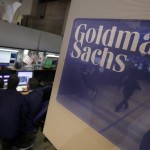The yen fell against the US dollar, after a report by the Japanese Ministry of Finance showed a record-high trade deficit in November, undermining the Japanese yens safe haven demand.
Having reached a session high at 103.03 at 02:35 GMT, USD/JPY traded at 102.95 at 08:26 GMT, gaining 0.27% for the day. The pair reached 103.92 on December 13th, the highest level since October 2008. Support was likely to be received at December 17th low, 102.50, while resistance was to be encountered at December 17th high, 103.11.
On Wednesday, the Japanese Ministry of Finance reported that the countrys trade deficit in November reached 1.35 trillion yen or ($13.1 billion) on a seasonally-adjusted basis, compared with the 1.2 trillion median analysts forecast. In October the trade deficit was downwardly revised from 1.09 trillion yen to 1.06 trillion yen. According to released data imports increased 21.1% from a year ago, while exports rose 18.4%.
“The yen will remain weak, the trade deficits are big enough to keep the currency from strengthening.”, said Daisuke Karakama, a Tokyo-based market economist at Mizuho Bank Ltd., cited by Bloomberg.
On Monday, the BoJ published a report, based on a survey, which showed that large-manufacturers in the fourth quarter were most bullish since December 2007. The poll for the months ended December revealed that sentiment among large-manufacturers increased to +16 from +12 in the preceding survey for the third quarter. The analysts’ forecast projected a reading of +15, while a higher value of +19 was registered in December 2007.
The large non-manufacturers index increased to +20 in the fourth quarter, the highest reading since September 2007 and up from +14 in the three months ended September. Analysts’ had projected a reading of +16.
Meanwhile, yesterday the US Labor Department reported that the consumer price index (CPI) rose 1.2% in November, compared to a year ago, short of analysts’ estimates of a 1.3% increase. In October the CPI rose by 1.0%. Data also showed that the CPI was flat in November, compared to October’s 0.1% decline and short of analysts’ projections of an increase by 0.1%.
Consumer prices, excluding food and energy costs, or core consumer prices, increased 1.7% in November from a year ago, unchanged from October and in line with expectations. Core CPI rose by 0.2% in November from 0.1% in October. Analysts’ forecast pointed to a 0.1% gain. The Federal Reserve regards that core prices can be a better gauge of longer-term inflationary pressure, because they exclude the volatile food and energy categories. The Fed’s target usually is to achieve core inflation of 2%.
Investors awaited the Federal Reserve decision on its bond-purchasing program and guidance on interest rates.
The Federal Reserve may begin to scale back its $85 billion in monthly asset purchases at the committee’s two-day policy, ending today, rather than wait until January or March, according to 34% of economists who participated in a Bloomberg survey on December 6th. In November’s survey 17% of respondents projected a tapering in December.
The yen has dropped 14% so far this year, the worst performer in Bloomberg Correlation Weighted Indexes which track 10 developed-nation currencies, while the dollar has been up 3.6%.
Elsewhere, AUD/USD touched a session high at 0.8928 at 0:20 GMT, after which consolidation followed at 0.8914, gaining 0.16% for the day. Support was likely to be found at December 17th low and also the lowest point since August 5th, 0.8882, while resistance was to be met at December 17th high, 0.8958.





